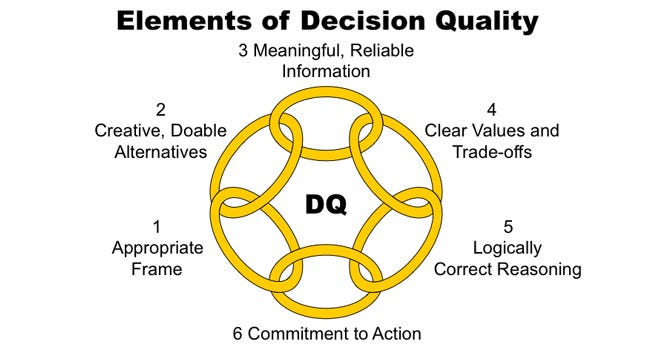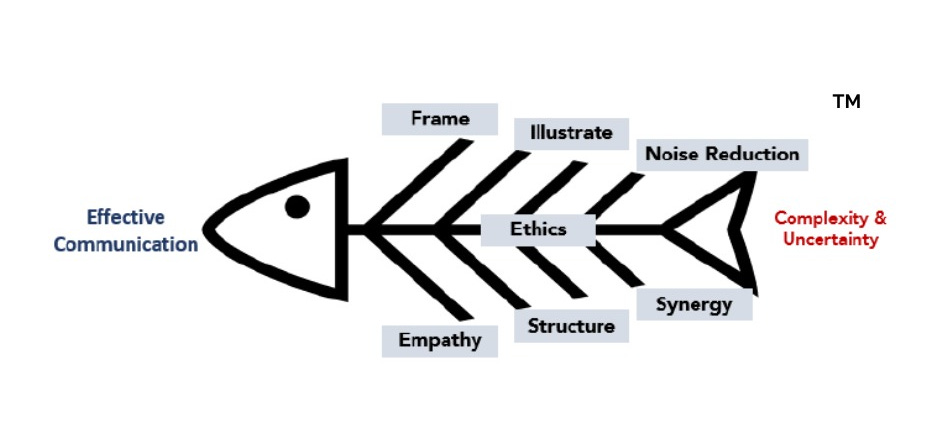
All decisions require an allocation of resources. In the case of environmental decisions, the way we spend our time, money, or behaviors changes the quality of life and the people around us. In addition to two precursors, there are seven reasons environmental decisions are difficult. Approaching the many parts of environmental decision making as a system produces five ways we can allocate resources in an effective manner.
Minimum Standards
Most people and organizations focus on complying with standards established by governments. As individuals, we tend to follow those same standards or pattern our behavior on what we consider the right thing to do.
Who Sets the Standards
Politics has been described as how one group of civilized people influence another without using weapons. Because environmental decisions have elevated levels of complexity and uncertainty over a long timeline, environmental decisions are predominately political. Politics are part of government, corporations, and our social fabric.
Environmental Versus Other Decisions
Environmental decision making differs from other types of decision making in several ways.
1. Complexity
Environmental problems involve the interaction of many parts. Unlike many other types of decisions, the outcomes are unclear for decades or generations.
2. Uncertainty
All decisions involve some level of uncertainty. Environmental decisions are unique because they usually occur at the particle or compound level, where there is often little data from the real world.
3. Interconnectedness
Environmental problems are often interconnected and have far-reaching impacts on ecosystems, human health, and the economy. What may be a protective solution for human health may have unintended consequences on the natural environment or the manufacturing of sought-after consumer products.
4. Detectability
We often cannot measure things of the greatest importance. Yes, sometimes we can speculate or estimate, but the past is not necessarily a predictor of an ever-changing future in the decades to come. In many cases, the chemicals in question are new.
In other cases, measurement techniques can drastically improve from the parts per million or billion levels to the parts per trillion. In other cases, because we cannot measure certain things to the level of others, we struggle with the targeted detectability levels for regulations.
5. Multiple stakeholders
Environmental decisions involve multiple stakeholders with different goals, interests, values, and priorities. There is an acute need to focus on processes that bring people to solutions that are created, understood, and accepted by all.
Time horizon: Environmental problems often have long-term consequences that may not be immediately apparent, requiring a longer time horizon for decision making. Most long-term decision making is an educated guess, at best, and not easily agreed upon.
6. Ethics
Ethics are the way we make decisions. There are three basic ethical frameworks: right versus wrong, we need to do what it takes to get a good outcome, and it is our duty to explain all aspects regardless of the decision or the outcome. Individuals usually lean toward one of these three ways of making decisions. However, we all use elements of all of these. And how heavily we lean on one or the other is often situational. The ethics of environmental decisions is compounded by the other factors outlined in this section.
7. Motives
Environment issues are often just a means to an end. The obvious example enables some groups to be more profitable than others. This also extends to a sense of righteousness or leveling the playing field. In my own experience, I have had stakeholder groups tell me their real motivation was to hurt the power of investor-owned utilities, chemical companies, food producers, and different market sectors.
8. Limited resources
Environmental decision making is often constrained by limited resources. Depending on whether your perspective is the world is good, or the world is bad, there are advantages and disadvantages to funding environmental agencies and research. Plus, there are simply too many uncertainties to fund everything.
How We Can Improve Environmental Decisions
1. Establish a Decision Quality Process
I prefer the “Eight Elements of Decision Quality” championed by Carl Spetzler. This cause-and-effect approach focuses on the following:
- Appropriate frame
- Creative, doable alternative
- Meaningful, reliable information
- Clear values and tradeoffs
- Logically correct reasoning
- Commitment to action

My favorite is one of several proven decision quality frameworks. The point is to use one.
2. Use a Formal Communication Framework
Environmental decisions require interacting with different people and their goals, values, and perspectives. Effective communication and facilitation are critical. I use the FINESSE cause and effect approach for effective communication, outlined in these seven elements.
- Facilitate
- Illustrate
- Noise reduction
- Empathy
- Structure
- Synergy
- Ethics

My favorite is one of several proven decision quality frameworks. Again, the point is to use a formal communication approach.
3. Seek Insights
The environmental world is full of varying information and opinions. It is easy to lock into one way of thinking because of the influence of our friends, social media, or television. Making environmental decisions requires predicting an uncertain future. No one really knows, so the quest for as much information as possible is the right one.
4. Participate in the Process
Serve on a local board of adjustment or planning commission. Provide comments when new regulations are proposed. Become involved in a professional or industry association. Environmental issues and decisions are all around you.
5. Evaluate Past Decisions
Humans and organizations tend to move to the next problem. Seldom do we have (or make) the time to reflect on the past issues and the way we allocated resources in response to them. After-event reviews are essential for improvement when complexity and uncertainty were elevated at the time of the decision making.
Applying It with FINESSE (and systems thinking)
All decisions require an allocation of resources. In the case of environmental decisions, the way we spend our time, money, or behaviors changes the quality of life and the people around us.
In addition to two precursors, there are seven reasons environmental decisions are difficult. A system is a collection of interrelated parts that produce an outcome that the parts acting alone cannot produce. Environmental decisions certainly have many parts. By approaching solutions to environmental decisions as a system, we can allocate resources in an efficient and effective manner. This article outlines five ways to produce better environmental decisions, starting with structured processes for decision quality and communication.
Note: This post first appeared on Substack.
JD Solomon Inc provides solutions for facilitation, asset management, and program development at the nexus of facilities, infrastructure, and the environment. Founded by JD Solomon, Communicating with FINESSE is the community of technical professionals dedicated to being highly effective communicators and facilitators. Learn more about our publications, webinars, and workshops. Join the community for free.
JD Solomon is the author of Communicating Reliability, Risk & Resiliency to Decision Makers: How to Get your Boss’s Boss to Understand and Facilitating with FINESSE: A Guide to Successful Business Solutions.
 Ask a question or send along a comment.
Please login to view and use the contact form.
Ask a question or send along a comment.
Please login to view and use the contact form.
Leave a Reply